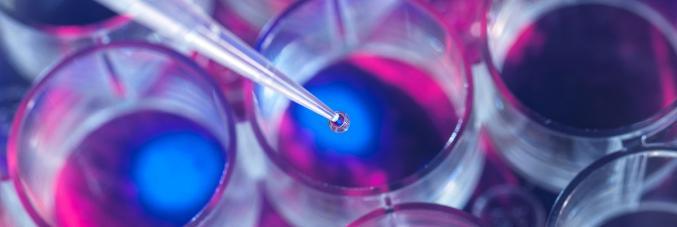
Unipd is part of the international research team paving the way for the development of new pharmaceuticals
12.07.2022
Researchers from Ecole Polytechnique Fédérale of Lausanne (EPFL), Ca 'Foscari of Venice, and the University of Padua have established a method to sustainably produce and quickly identify thousands of macrocyclic compounds, a family of pharmaceutical molecules of great interest for the treatment of serious diseases such as tumors.
Published in Nature Communications, the study entitled Synthesis and direct assay of large macrocycle diversities by combinatorial late-stage modification at picomole scale show how acoustic wave technology allowed the parallel synthesis of multiple different chemical compounds in tiny reaction drops.
Most pharmaceutical research programs begin with a combinatorial process over many years in which a large number of structurally different chemical compounds are tested against a given target protein. Experiments are performed in plates containing hundreds of microwells that contain a chemical compound to be analyzed, ultimately yielding thousands of plates to study. A procedure that requires several days, huge costs, and high consumption of chemicals and which often does not lead to the identification of promising molecules.
To overcome this laborious and expensive process, a new method established how to synthesize large collections of compounds in extremely small volumes by rapidly mixing the reagents using acoustic waves. Thanks to miniaturization and high speed, research can sustainably generate a collection of more than tens of miles of different compounds in just half a day.
The technology synthesizes small macrocyclic compounds, which is a class of molecules capable of targeting specific disease-specific target proteins. These compounds mimic some naturally occurring molecules, such as the immunosuppressive cyclosporine, the antibiotic vancomycin, and the antitumor dactinomycin, and possess numerous qualities in which the pharmaceutical industry is particularly interested. For example, they have a low molecular weight, a property that allows them to pass through the cell membrane and reach targets inside the cell. In addition, their compact and rigid structure favors a high binding affinity with the target protein, thus allowing the use of a smaller amount of molecule to obtain the desired effect.



